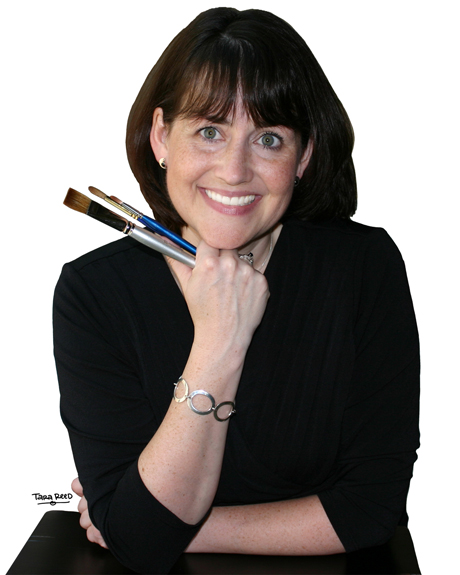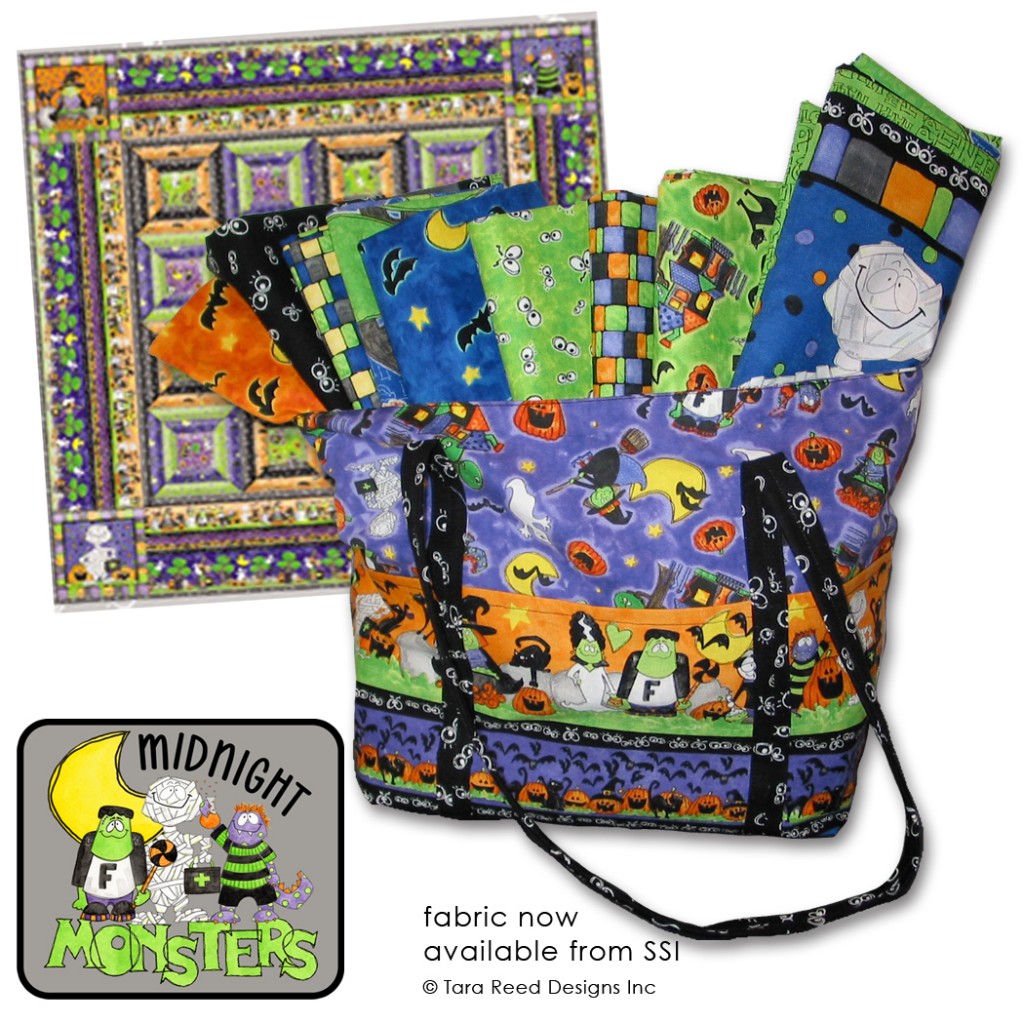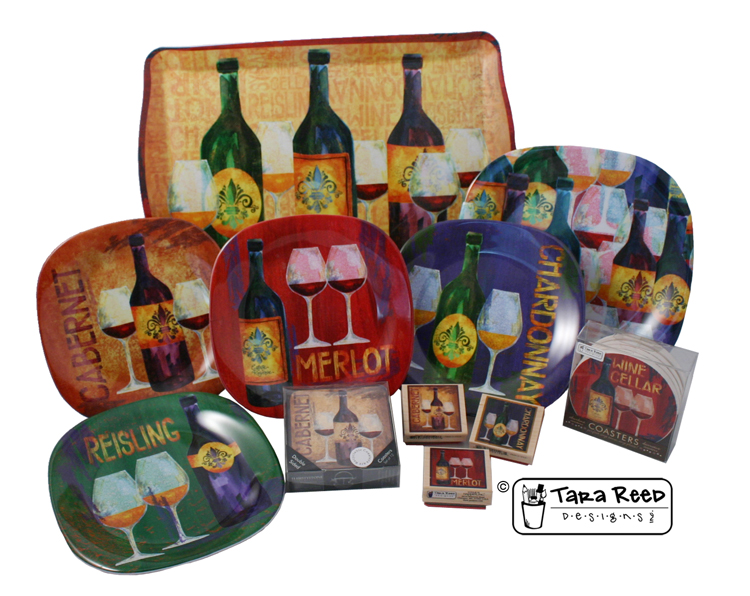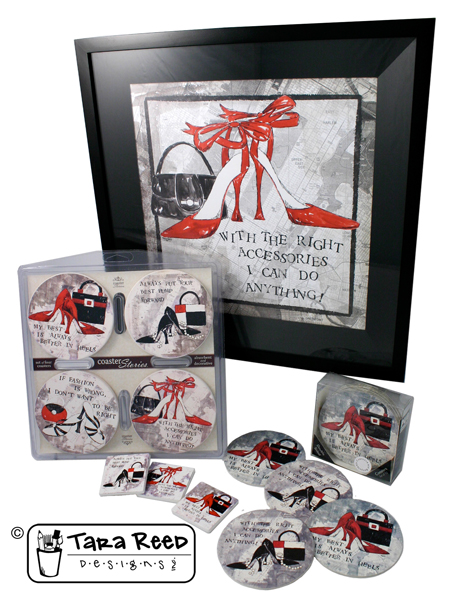By Carolyn Edlund
Tara Reed licenses her designs and teaches other artists about licensing their work as well.

Tara Reed
“Art Licensing” – as Tara explains it, means that an artist grants permission, through a contract – or licensing agreement – for a manufacturer to use their art on products, in exchange for a royalty – or percentage of sales. The artist retains all rights to the art and is simply granting rights for a particular product or products, for a set period of time.
AS: What do you mean when you stress that artists who want to license need to understand that “their art’s purpose is to sell someone else’s product”?
TR: Manufacturers license art to make their fabric, figurine or dish towels different from their competition. Buyers often choose which coffee mug to buy based on the art or design on it. The goal is to make a buyer choose the manufacturer’s product over another because of the art or design on it.
Consider calendars. Every calendar has the same year, months, weeks and dates, so why are there entire stores and kiosks devoted to selling calendars? People buy a calendar not for the basic information; they buy the look, the character, the feel, the art. They buy what they connect with – what goes with the décor in their home or office.
It is in a licensed artist’s best interest to really embrace the mindset that “their art’s purpose is to sell someone else’s product” and work as a partner to get the art right. The amount the artist receives is based on sales volume so in essence, they share in the success or failure of a product and design.

AS: When working with manufacturers, artists are creating designs that need to connect with thousands of people. What does this entail?
TR: Fine artists, who might do commission work or sell originals through galleries, need their work to appeal to one buyer. This allows them more freedom and latitude of expression, symbolism and style than artists who create art for licensing.
Artists who license their art need to create art that appeals to the masses. It could be a 75¢ magnet or a $300 set of dishes. That is not to say that you can’t have a style or choose your topics, but you need to stay in a more ‘mainstream’ space than other types of art careers.

AS: Tell us about “art emergencies” that arise when manufacturers are preparing products for markets.
TR: Artists in the industry and I often joke about “Art Licensing 911” calls – where you get a frantic call from a manufacturer telling you they need this, that and the other thing . . . in 3 days but preferably 3 hours if at all possible. So if an artist doesn’t like to change gears for potential opportunities, work quickly and work to deadlines, art licensing might not be the best choice.
Here’s how it happens. On a Thursday, a salesperson calls on the retailer who says, “Oh by the way, we are selecting new products in category X next week. If you have anything for us to consider, we need it by Thursday.” The salesperson makes a living selling products and earning commissions, and wants to make the sale. They call the manufacturer, tell them the parameters and say they need the information by Wednesday at the latest.
The manufacturer has to scramble and figure out what art they have that might appeal to the retailer. They might have something on hand or they might call the artists they have worked with. The amazing opportunity is explained, but the manufacturer needs to see any art by Monday, so they have time to review their options, make choices and mock up designs to get to the salesperson.
So guess what the artist has to do on Friday or over the weekend if they want a shot at this deal? Voila! An Art Licensing 911 event is born.
AS: You have said that “More is More”. What does that mean?
TR: Art licensing is a numbers game. The more art you have to be considered, the better your chances of getting licensing deals and earning a decent income from your royalties. Artists who can create and adapt art quickly have a better chance of success than those who work very slowly and detest being rushed or held to deadlines.

AS: Artists working on licensing deals create “design collections” for products. How does this work?
TR: In the art licensing industry, manufacturers expect to see ‘collections’ or sets of art that go together. Artists who paint completed images use four coordinating pictures as the building blocks of a collection. For example, four different but coordinating snowman paintings would make up a winter or holiday collection. The artist could make it more easily applied to products if they created some coordinating borders and repeat patterns to go with the designs.
An alternate way of creating art collections is to start with individual icons as the building blocks. The icons can then be combined to create scenes (similar to the four painted images above), borders and repeat patterns.
Creating collections means thinking about the bits and pieces a manufacturer would need to create a product. Take a gift bag for example. It might have a repeat pattern and a repeat border around the top. If it has a tag, that might have a coordinating scene or icon. When manufacturers see that you understand and can provide what they need, you are more likely to get an art licensing deal.
Art licensing is only one of many ways to earn a living with art and won’t be for everyone. It has been a great fit for me – I love the challenges that come with it and the joy of “visiting” my art on products in stores.


Tara, well said. You are so good explaining these things. Artists new to licensing have such a hard time understanding how it all works. You have done a lot to help unlock these mysteries!
Maria Brophy also has an article on her blog about licensing – check it out at http://bit.ly/bQ9xQD
Great tip about creating collections. Presenting a professional image that shows you know what an industry is about and how to function within it has got to be integral to getting a client or contract.
That’s very true, Catherine. There’s nothing worse than looking like an amateur when you want to get contracts. Tara is such a pro and very helpful to aspiring licensors!